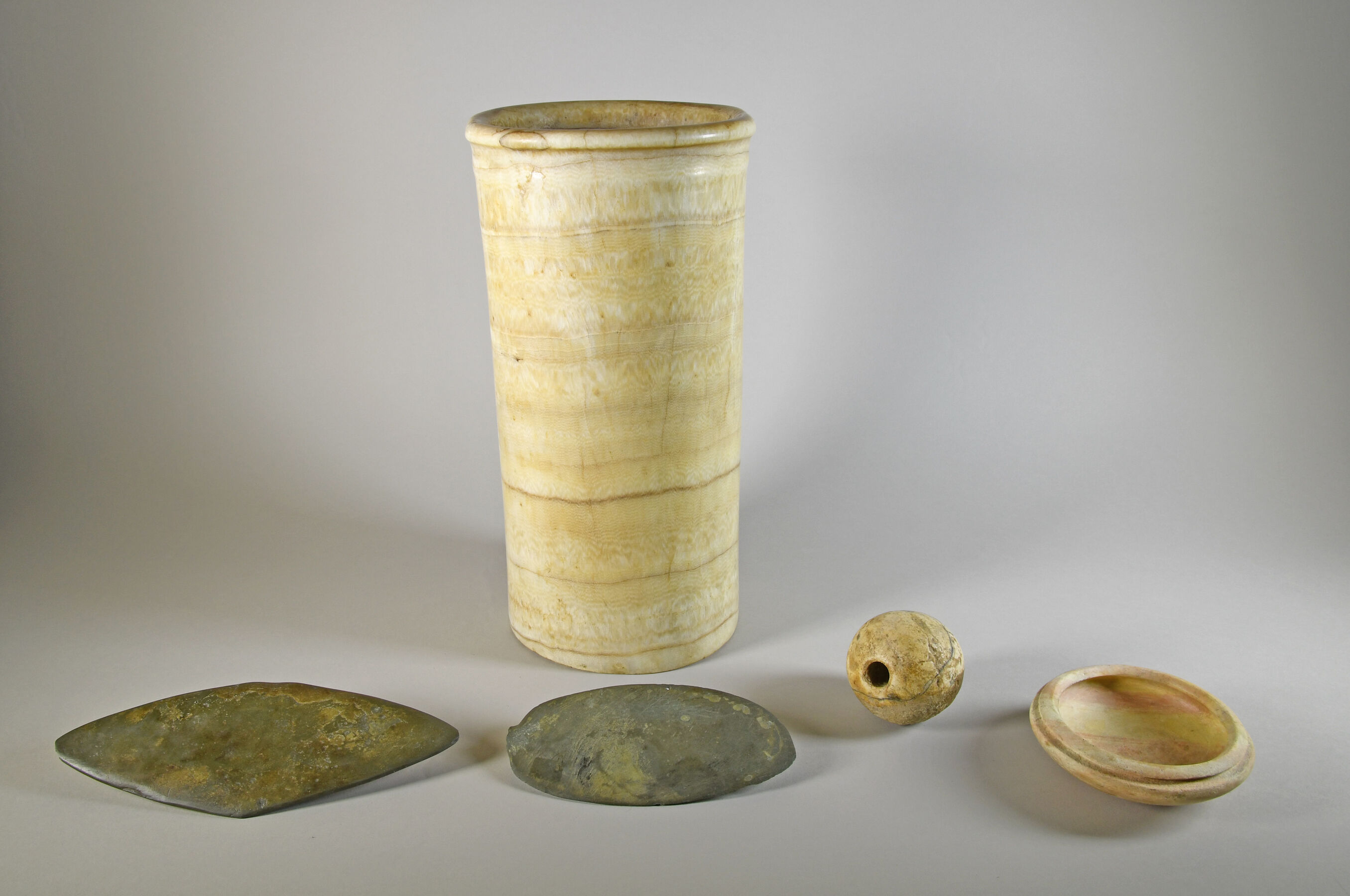Stone vessels were frequently deposited in Early Dynastic elite and royal burials. Specialized artisans fashioned these vessels using drills with tubular flint bits and abrasives like powdered quartz. Often empty, the quantity and quality of these funerary vessels indicate their importance as objects of power and prestige.
Stone cosmetic palettes were used to grind minerals for eyepaint. These palettes were usually buried with a grinding pebble and a bag of minerals like galena for black. Early palettes were geometric and later took animal form.1 Palettes in the form of a fish were the most common zoomorphic palette.2
Mace heads reflected the power of the king. They were mounted on a pole and used as a weapon in life and to maintain the order of the cosmos in death.3
MH
-
Patch, Diana Craig. 2011. “From land to landscape.” In Dawn of Egyptian art, edited by Diana Craig Patch, 20-81. New York; New Haven, CT; London: Metropolitan Museum of Art; Yale University Press.. ↩︎
-
Berman, Lawrence M., and Kenneth J. Bohač. 1999. Catalogue of Egyptian art: the Cleveland Museum of Art. New York: Hudson Hill Press.. ↩︎
-
Teeter, Emily, ed. 2011. Before the pyramids: the origins of Egyptian civilization. OIMP 33. Chicago: The Oriental Institute of the University of Chicago.. ↩︎
Bibliography
- Berman and Bohač 1999
- Berman, Lawrence M., and Kenneth J. Bohač. 1999. Catalogue of Egyptian art: the Cleveland Museum of Art. New York: Hudson Hill Press.
- Patch 2011
- Patch, Diana Craig. 2011. “From land to landscape.” In Dawn of Egyptian art, edited by Diana Craig Patch, 20-81. New York; New Haven, CT; London: Metropolitan Museum of Art; Yale University Press.
- Teeter 2011
- Teeter, Emily, ed. 2011. Before the pyramids: the origins of Egyptian civilization. OIMP 33. Chicago: The Oriental Institute of the University of Chicago.
